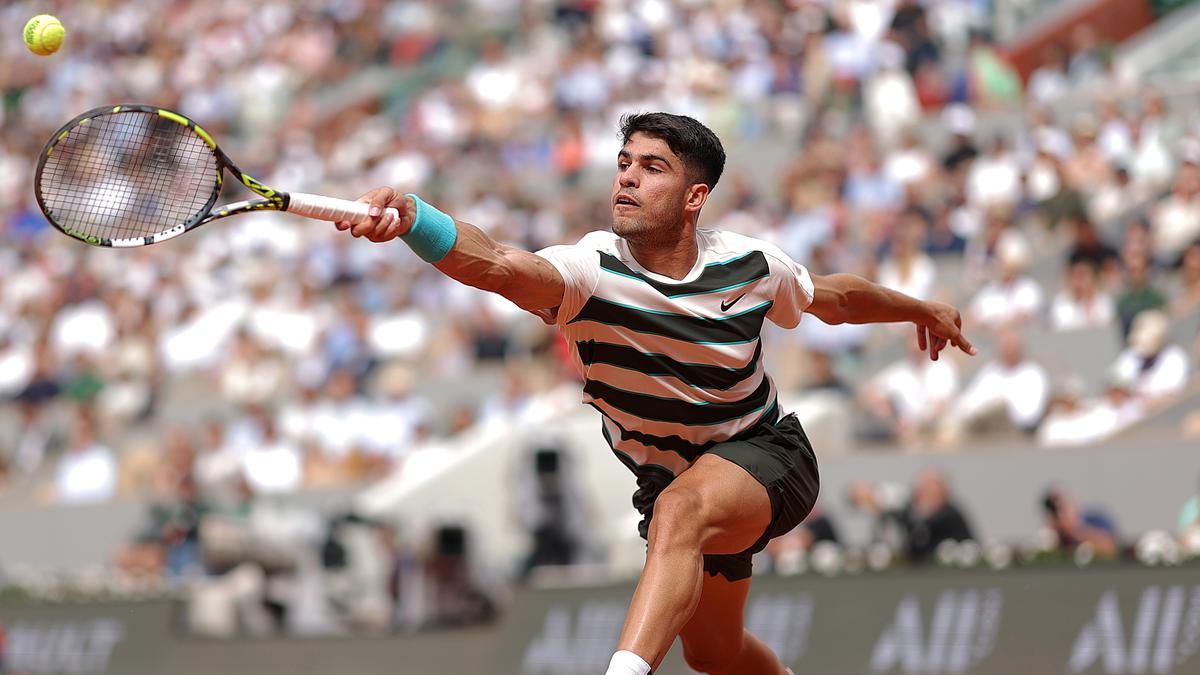Nearly a decade ago, D. Vignesh, a Bengaluru boy in his mid-teens, was on the lookout for opportunities to play football in a competitive environment. He practised at the Ozone Academy. Outside of the competitions that his institute would register for, he and his group of friends did not have many games to look forward to.
It was then that he heard of The Amateur League (TAL), which started in 2014 with the aim of giving enthusiasts a platform to test their skills in an 11-versus-11 setting. Vignesh and his mates did not have a full-fledged team, but TAL slotted him in one of the many that had signed up.
“It was the first time I played 11-a-side,” Vignesh recollects. “Otherwise, I had to be part of the C-division (run by the Bangalore District Football Association). But there, in each group, there were four teams, and you got just three games. Only if you qualified out of that group were there more chances.” In TAL, he got 10 to 12 guaranteed matches. “It was a very professional set-up, with referees and analysis. There were corporates and semi-professional teams. I think even Ashley Westwood (former coach of the city’s biggest club, Bengaluru FC) played. I understood my body better, how much load it could take, and how fit I could be.”
From there, Vignesh went on to join the Sports Authority of India and played for India at the junior level before making his debut for the senior team at the 2018 South Asian Football Federation (SAFF) Championship. In 2020-21, Vignesh was an integral part of the Mumbai City FC team that won the Indian Super League (ISL), the top tier of Indian football.
To assemble a team for the U-17 World Cup, coaches had to comb the country since there wasn’t a steady pipeline of game-ready players. It is this landscape that a few youth football leagues in Bengaluru are trying to change.
| Photo Credit:
K. MURALI KUMAR
Game-ready players
Vignesh’s progression is what many budding footballers in India desire but can only dream of. When India hosted the FIFA U-17 World Cup in 2017, it had a direct entry into the tournament by virtue of being the host. But to assemble the team, coaches appointed by the All India Football Federation (AIFF), Indian football’s governing body, had to comb the country. There wasn’t a steady pipeline of game-ready players, a feature that sets apart advanced footballing nations in Europe and South America.
It is this landscape that a few youth football leagues in Bengaluru are attempting to change. Starting in 2019, the Karnataka State Football Association (KSFA), the umbrella organisation for footballing activities in the State, began its youth leagues programme that now sees competitions in the Under-7, 9, 11, 13, 15, and 17 categories, with no fewer than 15 teams in each age group.
Also in 2019, Double Pass India, a private entity, started its Development League (DPDL) for children under 7, 9, 11, and 13. TAL, an initiative of Sports Paddock, a city-based sports management firm, began its youth leagues this year in the U-13, U-15 and U-19 groupings.
Bappaditya Bhattacharjee, founder and director of Roots Football Club, says the number of academies has more than doubled in the last three years, ballooning upwards of 40. But the Sree Kanteerava Stadium, Bengaluru FC’s home arena, is the only accessible natural grass turf.
| Photo Credit:
K. MURALI KUMAR
Catchment area for players
“I used to ask the foreign coaches who were here, like David Booth (England) and Lars Sorensen (Denmark), ‘Why are we lagging behind?’” recalls M. Satyanarayan, previously the general secretary of KSFA and now the deputy secretary general of AIFF. “They said, ‘It’s because your boys play football only when they’re 15-16, and there are no good initiatives at the grassroots.’ So we started these leagues to create a catchment area for young players.”
Mandar Tamhane, the current CEO of ISL club NorthEast United FC but someone who spent a decade at Bengaluru FC (BFC) until January 2023, feels such leagues are vital for player development. “You can have the best academies and coaches, but if there is no competitive environment, players cannot become professionals,” he says. “If the kids do not play 40 to 50 games in a year, we will not see growth.”
He compares U-7 or U-11 kids from India with those from Europe or South America. “There is not much difference. But when those kids transition to the U-13, 15 and 17 age groups, the difference suddenly becomes huge. Does that mean that we don’t have good coaches and infrastructure? To some extent, yes, but not to the extent where there is a lack of competition. But in the past four or five years, because of the Karnataka Youth Premier League and leagues like DPDL, there are almost 35-40 games a season for kids.”
Mandar Tamhane, the CEO of ISL club NorthEast United FC, says, “You can have the best academies and the best coaches, but if there is no competitive environment, players cannot become professionals. If the kids do not play 40 to 50 games in a year, we will not see growth.”
| Photo Credit:
K. MURALI KUMAR
Numbers game
In India, Mizoram has found considerable success by introducing football early through its ‘Baby Leagues’ for children. It helps that football is the most popular game, and the general standards are high. The sheer number of players the State provides for the national team is evidence enough that a system built on early initiation into competitive football works.
Non-traditional football centres like Bengaluru, though, rely on the AIFF grassroots programme, but here, children do not play enough games as the initial rounds are regional and the competition is weak. Only those who progress to the national level get a handful of quality matches.
The structure was revamped ahead of the 2018-19 season with the introduction of a three-tier system involving sub-junior (U-13), junior, (U-15) and elite (U-17) divisions. But 2018-19 turned out to be the only full-fledged year before COVID struck, and Minerva Punjab, the U-15 champions, and Reliance Foundation Young Champs, the U-13 champions, contested just 11 and 13 ties, respectively.
It is this lacuna that the KSFA and other youth leagues in Bengaluru are looking to fill, and there are signs that the model is working. Jordan Mobin Paul, a skilful dribbler, joined Bengaluru FC’s youth development back in 2018 and has since made the jump to the club’s Residential Academy in Ballari at the Inspire Institute of Sport. So have two others: Devansh Chintan and Shauryaveer Verma. Paul and Chintan are from the BFC Soccer Schools, and Verma is from BOCA Academy (now Alchemy International). All three have played in the DPDL.
“BFC, by being the main ISL club in the city, is the main destination,” says Sarthak Dubey, director, Double Pass India. “BFC has actually taken about eight kids from Bangalore into their Ballari set-up, and all eight of them have played DPDL from season one. We can’t really take credit for their day-to-day development, but we’ve actually seen their journey.”
Impacting Indian football
Dubey says, “For us, the ultimate aim is to impact Indian football. We want to build a pathway where kids can join at the age of 6 or 7 and make it all the way up. We want to become a scouting platform for top ISL and I-League clubs.”
According to Prithvi Ramakrishnan, founder, Sports Paddock, there is a cultural shift in how parents see sports, and that has aided in the betterment of the footballing ecosystem. “Those who were in their 20s a decade and a half ago, who watched sports and adopted it as a way of life, are now eager that their children be part of sports,” he says. “That has definitely helped raise the demand for academies.”
Sarthak Dubey, director, Double Pass India, says, “For us, the ultimate aim is to impact Indian football. We want to build a pathway where kids can join at the age of 6 or 7 and make it all the way up.”
| Photo Credit:
K. MURALI KUMAR
The biggest gap in the market, he feels, is that people don’t have a historical record of what they’ve done. “At best, they can get on the letterhead of the club saying this person has participated. How did you do at the club? There is no record. So, how will anyone judge them? Our aim is to bridge this gap, to track players’ progress through videos, match reports, and other helpful components.”
The rise of these football leagues has also helped change the footballing demographics of Bengaluru. Earlier, players from the city were predominantly from less-privileged backgrounds. Today, the pool also draws from the wealthier classes, is more urban and representative of the city’s cosmopolitan ethos. In fact, there is a firm belief that the churning will ultimately benefit local football.
In comparison with states like Kerala and Goa, very few Karnataka players play at the highest level in India, with the most notable being Vignesh (now Hyderabad FC) and Sanjeev Stalin (Mumbai City FC). If there is a pathway, starting from the academies to the youth leagues all the way up to the Indian Super League, the region could emerge as a footballing hotbed.
“Nowadays, children don’t mind taking a gap year to try and make it in football professionally,” says Bappaditya Bhattacharjee, founder and director of Roots Football Club. “I have been in Bangalore football for 16-17 years and the last five years have been way different. In these leagues, quality may not be high, but there are many matches being played. It helps improve players’ skills, decision-making and fitness. This is how we won the Santosh Trophy in 2023 (after 54 years). When we started (our academy), we thought, ‘Let’s see if we can turn passion into business’. Now it’s about turning players into professionals.”
According to Prithvi Ramakrishnan, founder, Sports Paddock, there is a cultural shift in how parents see sports, and that has aided in the betterment of the footballing ecosystem.
| Photo Credit:
K. MURALI KUMAR
Infrastructure gaps
However, the cautionary note in the story is whether the city possesses the necessary infrastructure. Bhattacharjee says the number of academies has more than doubled in the last three years, ballooning upwards of 40. But the Sree Kanteerava Stadium, Bengaluru FC’s home arena, is the only accessible natural grass turf.
Recently, when the Indian National football team led by Sunil Chhetri won the SAFF Championship in Bengaluru, coach Igor Stimac had to limit training drills because there were only artificial turfs, and they could cause injuries. In 2017, despite having made the initial shortlist of eight host cities for the U-17 World Cup, Bengaluru missed out because it lacked infrastructure.
“We desperately need more grounds for 11-versus-11 football,” says Bhattacharjee. “The Army has a few grass grounds, but those are not accessible. This boom is not going to last if we don’t have affordable and quality infrastructure.”







Leave feedback about this